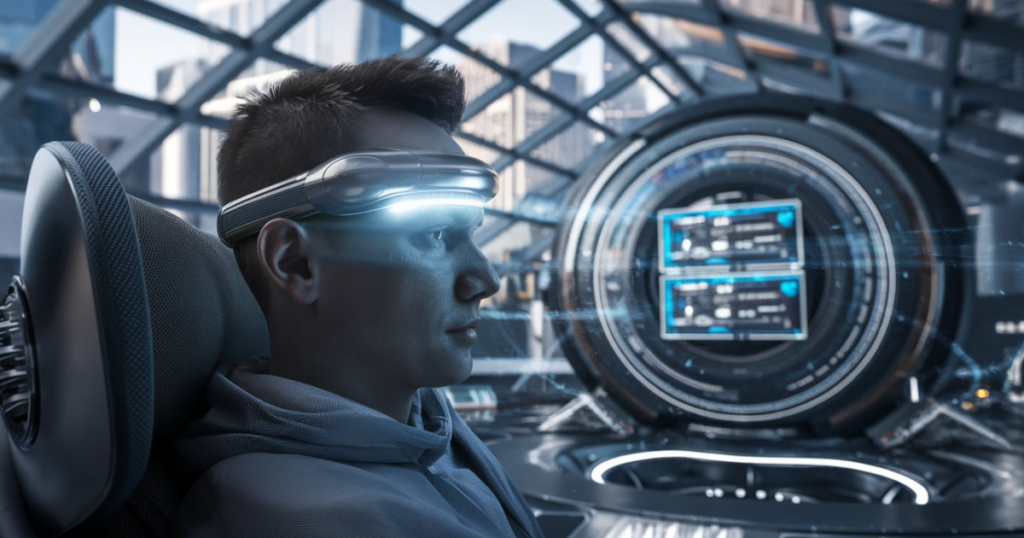Voice to Skull (V2K) technology is an emerging area of concern in the modern world. This technology, also known as the microwave auditory effect, is often linked to electronic harassment and violations of privacy rights. As technology advances, personal security is becoming more vulnerable, raising concerns about mind control and cyberstalking. In this article, we’ll explore the intricacies of Voice to Skull technology, its legal and ethical questions, and how it threatens society.
What is Voice to Skull Technology?
Voice to Skull technology, also known as V2K, is a form of auditory transmission using microwave frequencies. It allows sound or voices to be heard by a person without the need for external sound sources. The microwave auditory effect is central to how V2K operates, delivering messages directly to the brain. Some claim this technology is used for electronic harassment, creating fears about mind control and unlawful surveillance.
Microwave Auditory Effect
The microwave auditory effect occurs when certain frequencies of microwaves stimulate the auditory nerves, making it seem like sound is coming from inside the head. This effect is at the heart of V2K, where voices can be projected into someone’s mind. While some research supports its existence, ethical and legal questions arise concerning privacy rights and potential misuse. The technology opens the door for tech-enabled stalking and cyberstalking.
Privacy and Security Concerns
With V2K, the idea of privacy becomes blurred, especially in situations involving unlawful surveillance. Victims of electronic harassment often report being targeted by invisible attackers using this technology for constant monitoring. The legal implications surrounding V2K remain unclear, leaving personal security vulnerable. Privacy laws are struggling to keep up with the rapid pace of emerging technologies, particularly when it comes to electronic stalking and surveillance.
How Does Voice to Skull Technology Work?

V2K works by using microwaves to transmit sound waves directly into a person’s auditory system. The human brain can interpret these sound waves, which can result in hearing voices that are not physically present. This form of electronic harassment has been linked to experiments by military and intelligence agencies. V2K may also be used in situations of cyberstalking and mind control. Its ability to bypass traditional methods of communication has raised concerns about privacy rights and personal security.
Technology Harassment and Mind Control
The concept of mind control through technology like V2K has long been a subject of conspiracy theories and scientific debates. People report hearing voices or receiving commands through these microwave frequencies, which can lead to distress. Technology harassment, which includes electronic stalking, poses significant risks to personal security. Victims often struggle to find legal recourse, as the technology is difficult to prove or detect.
Legal and Ethical Questions
The legal and ethical questions surrounding V2K technology are complex. Many argue that it violates basic privacy rights and personal security, while others claim its use in surveillance is illegal. Despite these concerns, few legal precedents exist to address this issue effectively. The debate over the ethical implications of V2K continues, as governments and private organizations explore the limits of emerging technologies.
The Impact of V2K on Society
Voice to Skull technology represents a shift in how emerging technologies affect our everyday lives. The threat of cyberstalking and unlawful surveillance is no longer limited to the digital world. With V2K, personal security extends beyond the physical realm, as individuals report experiencing electronic harassment from remote attackers. The microwave auditory effect and tech-enabled stalking challenge traditional ideas of safety and privacy.
Electronic Harassment and Cyberstalking
Cyberstalking has taken on new dimensions with the rise of V2K. Victims of this technology often describe it as a form of electronic harassment, where they are monitored, stalked, or manipulated without their consent. Cyberstalking through V2K involves the use of electromagnetic waves to transmit commands or voices directly into the mind. This form of harassment is difficult to track, and privacy laws are struggling to keep up with these advances in technology.
- Electronic stalking is a growing concern as more reports of V2K harassment surface.
- Tech-enabled stalking creates new challenges for law enforcement and personal security.
- Cyberstalking is no longer limited to digital interactions, with V2K opening new avenues of invasion.
- Unlawful surveillance through V2K violates the basic right to privacy and increases personal vulnerability.
Privacy Laws and Legal Implications
Emerging technologies like V2K pose significant legal challenges, particularly in relation to privacy laws. Many people targeted by V2K report a lack of legal protection, as the technology is difficult to prove. Privacy laws must adapt to address tech-enabled stalking and the use of electromagnetic waves in electronic harassment. The legal implications of V2K raise concerns about how governments and corporations use this technology.
- Privacy rights are increasingly under threat from emerging technologies like V2K.
- Legal implications of V2K require updates to existing laws to address new forms of harassment.
- Unlawful surveillance using electromagnetic waves challenges traditional legal frameworks.
- Mind control and electronic stalking present ethical dilemmas that governments must address.
Table: Legal and Ethical Concerns Related to V2K
| Legal Concern | Ethical Concern | Example |
| Privacy Rights Violations | Mind Control Possibilities | Use of V2K in surveillance without consent |
| Unlawful Surveillance | Technology Harassment | Targeting individuals with V2K for cyberstalking |
| Lack of Legal Precedents | Ethical Use of Technology | Governments using V2K for intelligence operations |
| Personal Security Threats | Emerging Technologies Misuse | Companies testing V2K on unknowing individuals |
The Future of Voice to Skull Technology

The future of V2K technology remains uncertain, as its use raises more questions than answers. The potential for misuse is alarming, particularly in areas like electronic harassment, tech-enabled stalking, and unlawful surveillance. Privacy rights must be reevaluated to address the challenges posed by this form of emerging technology. As research continues, it is vital to establish legal and ethical boundaries that protect individuals from harm.
Emerging Technologies and Personal Security
Emerging technologies such as V2K require a reassessment of personal security. While technological advancements offer numerous benefits, they also present new risks. People must remain vigilant against electronic harassment and unlawful surveillance. Privacy laws need to evolve, ensuring that emerging technologies like V2K are used ethically and legally.
- V2K technology has the potential to improve communication but also threatens personal privacy.
- Tech-enabled stalking is an area of concern as new forms of surveillance become available.
- Personal security is at risk as governments and private organizations explore V2K.
- Emerging technologies must be regulated to prevent misuse in surveillance and harassment.
Legal and Ethical Boundaries
The legal and ethical boundaries of V2K technology are not yet fully understood. With privacy rights and personal security at stake, governments must consider the implications of this technology. Legal frameworks need updating to address new forms of harassment, such as V2K-based cyberstalking. Establishing ethical boundaries for emerging technologies like V2K is essential in protecting individuals from harm.
FAQs
What is Voice to Skull Technology?
Voice to Skull Technology, or V2K, uses microwave frequencies to transmit sound directly to a person’s brain.
Is Voice to Skull Technology illegal?
There are no clear laws, but V2K may violate privacy rights and be considered unlawful surveillance.
Can Voice to Skull Technology be detected?
Detecting V2K is difficult since it uses electromagnetic waves, making physical evidence hard to find.
How is V2K linked to cyberstalking?
V2K is used in tech-enabled stalking by transmitting commands or voices into the minds of victims.
What are the legal implications of V2K?
V2K’s use raises complex legal questions, especially regarding privacy laws and electronic harassment.
Conclusion
Voice to Skull Technology represents a significant development in the world of emerging technologies. While its potential uses are vast, the dangers it poses to personal security and privacy rights cannot be ignored. The ethical and legal questions surrounding V2K need urgent attention, as the technology challenges the traditional boundaries of surveillance and harassment. Governments must work swiftly to ensure that V2K is regulated to protect individuals from misuse and preserve the integrity of privacy laws.

Hi,
Meet, the admin of GeneralLoom.com. I loves to exploring the latest trends, tech, and fashion. With a keen eye for detail, I ensures the blog is always up-to-date and engaging.
I enjoys writing, researching, and sharing news about celebs and innovations.
In spare time, I also loves to read, travel, and discover new cultures. Dedicated to providing quality content, my aims to make GeneralLoom.com a top destination for curious minds. Reach out to me for any questions or feedback.







